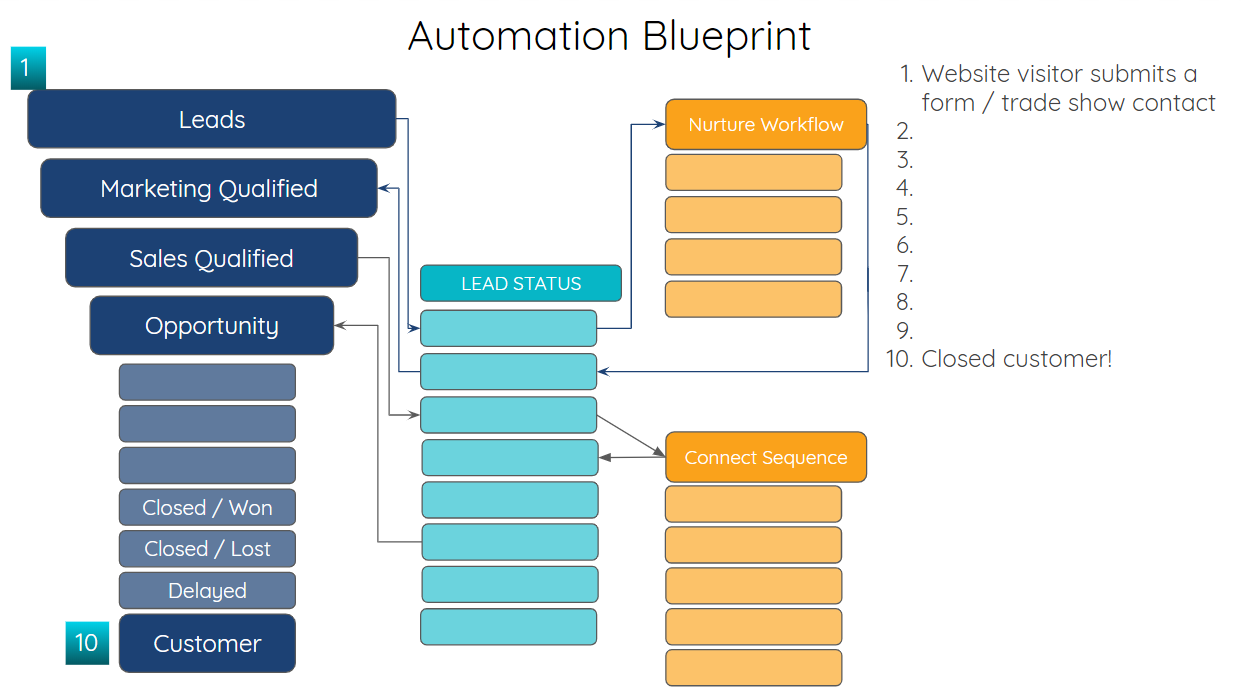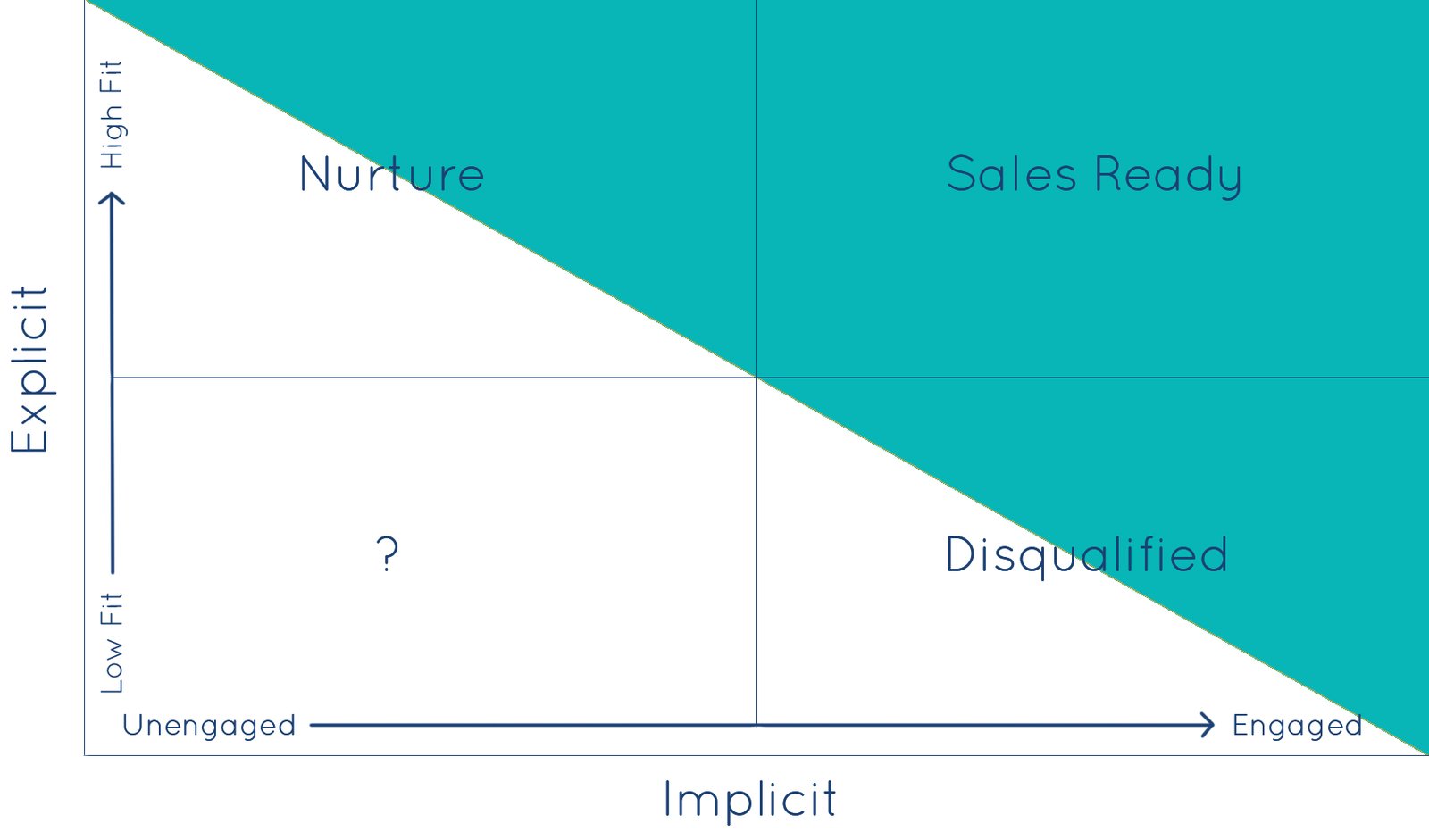
Marketing automation adoption continues to grow among marketers in 2020, with most marketing teams now using at least one automation tool as part of their tech stack.
Building a smart marketing automation strategy is a great way to generate remarkable marketing results and revenue growth in 2020. Like most things in digital marketing, being strategic and thoughtful in your approach to marketing automation is the best way to proceed. A sloppy or on-the-fly approach without a thoughtful, buttoned-up strategy is almost certain to create headaches and hurdles down the road. And it certainly won’t be scalable.
Common goals of a marketing automation strategy include:
- Driving engagement with your existing audience of leads and customers
- Increasing productivity of the marketing team
- Generating more leads
- Upselling and cross-selling to customers
- Aligning marketing and sales
- Measuring performance accurately
- Taking a data-driven approach to marketing
Every organization’s marketing automation strategy should be uniquely tailored to suit its needs, but you’ll have to focus on some key areas to succeed.
Here are the seven must-haves for your marketing automation strategy:
1. Alignment
Aligning your marketing and sales teams is a must if you want your marketing automation strategy to be successful. In 2020, the most successful companies have broken down the traditional silos between marketing and sales, choosing instead to thrive as one cohesive revenue team.
Failing to align your marketing and sales teams from the beginning is almost certain to create automation hiccups down the road.
The best way to ensure alignment between marketing and sales is to create a Service-Level Agreement (SLA) [link to: template]. An SLA is a formal agreement between marketing and sales that sets forth standards of accountability for both teams to drive toward a single goal of increasing revenue.
SLAs typically include agreed-upon definitions of lifecycle stages, lead statuses, and deal stages, as well as goals for website traffic, leads, MQLs, SQLs, opportunities, and customers.
For example, your SLA might require that all leads delivered from marketing must have a lead score greater than 100 AND have visited the website or engaged with marketing material/email in the past 30 days. The sales team commits to reaching out to all leads within 24 hours with a minimum of three touches over the first five business days.
2. Process and Systems Map
Be sure to include a process and systems map in your marketing automation strategy. This map visualizes your marketing and sales processes in flow chart form, and it’s particularly valuable when you have multiple databases in your tech stack.
The map typically includes lead generation channels, marketing campaign touches, and marketing and sales handoffs. Having this map is critical to establishing scalable processes and laying an automation infrastructure foundation.
Teams that are using more than one piece of marketing and sales technology (most teams today) should also overlay their tech stack onto this important document. It’s important to see exactly where data is passing, what data is passing, and what automation triggers are tied to those pieces of data.
Don’t skip this step. Many companies, particularly those that are less technologically sophisticated, make the mistake of jumping right into their automation tool without a sound process and systems map in place. When organizations do this, they miss powerful opportunities to improve their processes and often end up making ad hoc, reactionary changes to their system throughout the year. Grab a blueprint here.
3. Lead Scoring
Lead scoring is one of my favorite features of marketing automation software. It provides an automated way to rank leads for your sales and marketing teams. Lead scoring works by assigning a specific numerical score to certain attributes that make a lead more likely to become a customer.
Most lead-scoring models start with both demographic and behavioral attributes. Demographic attributes are scored based on known information about a lead, like their industry, job title, or location. Behavioral or engagement scoring means assigning points for actions that a user takes with your marketing or sales content, like clicking an email, watching a video, or submitting a form.
The right mix of lead scoring will provide your sales team with the most qualified and ready-to-buy prospects from your CRM database.
4. Personalization

Buyers in 2020 expect a personalized buying experience.
Marketing automation affords you a ton of personalization power, far beyond the basic _firstname token in an email or email subject line. Using marketing automation, you can show completely different versions of your website, blogs, email, and ads to different audience segments. This can include new vs. known contacts, the device being used, a contact’s industry vertical, or a list of recent webinar attendees.
The applications for this ultra-personalized approach to digital marketing are seemingly endless. As your personalization strategies become more complex, it becomes even more important to ensure that your database is clean.
5. Multivariate Testing
Multivariate testing is a must for a results-focused marketing automation strategy in 2020. Multivariate testing is a method of hypothesis testing where multiple variables are combined and tested as part of a controlled experiment in order to determine which combination of variations produces the most conversions. Multivariate testing uses the same core mechanism as A/B testing or split testing, but with a higher number of variables.
Multivariate testing is great for tweaking and refining digital assets, and it allows marketers the opportunity to improve their campaign performance continuously over time. Most reputable marketing automation tools come with this powerful functionality built in.
In your 2020 marketing automation strategy, include a section for optimization and multivariate testing. It doesn't matter how established your website and marketing content is; you can start testing and learn from those tests on day 1. Use a prioritization methodology to determine where to focus on your website and what to test, and use an experiment tracker to keep track of your results.
6. Lead Nurturing
Perhaps the simplest use case for marketing automation is lead nurturing, also known as a drip campaign. In a lead nurturing campaign, your marketing automation platform sends an automated series of emails at a pre-established cadence. Campaigns are strategically designed to keep leads engaged and build trust between leads and your company.
Effective lead nurturing campaigns keep your brand top-of-mind for prospects, which means that when a prospect’s pain point or business problem becomes acute, you’ll be the first resource they think of. This is why companies that excel at lead nurturing generate 50% more sales-ready leads at 33% lower cost than those that don't.
Nurture campaigns are also a great way to cross-sell and upsell to existing customers.
Marketing automation lets you create lead nurturing workflows that range from very simple to extremely complex, and you can launch campaigns that improve continuously over time. If you’ve never done lead nurturing before, start with three to five simple emails that serve up your best content.
7. Chatbots
Chatbots – automated chat functions on a company’s website – create massive user engagement potential and are a smart channel for almost any organization to add. Chatbots use pre-programmed if/then logic to help answer users’ questions and help users find what they’re looking for on your website.
Based on a user’s response, the chat can be routed to the right person and then even ask for specific, relevant information. This can save your team a lot of time for something like checking on an order status, by gathering the required info ahead of time.
Using chatbots gives website visitors a 24/7 concierge to handle inquiries when your team is away or your business is closed.
Chat functions on websites, whether manned by human team members or backed by a bot, are already the norm in user experience. They also contribute to better personalization. While many prospects are willing to pick up the phone or submit a form, younger members of the workforce are generally more likely to engage with a chat.
Jumpstart your marketing automation strategy with our free automation blueprint. Click below to download your copy now.










